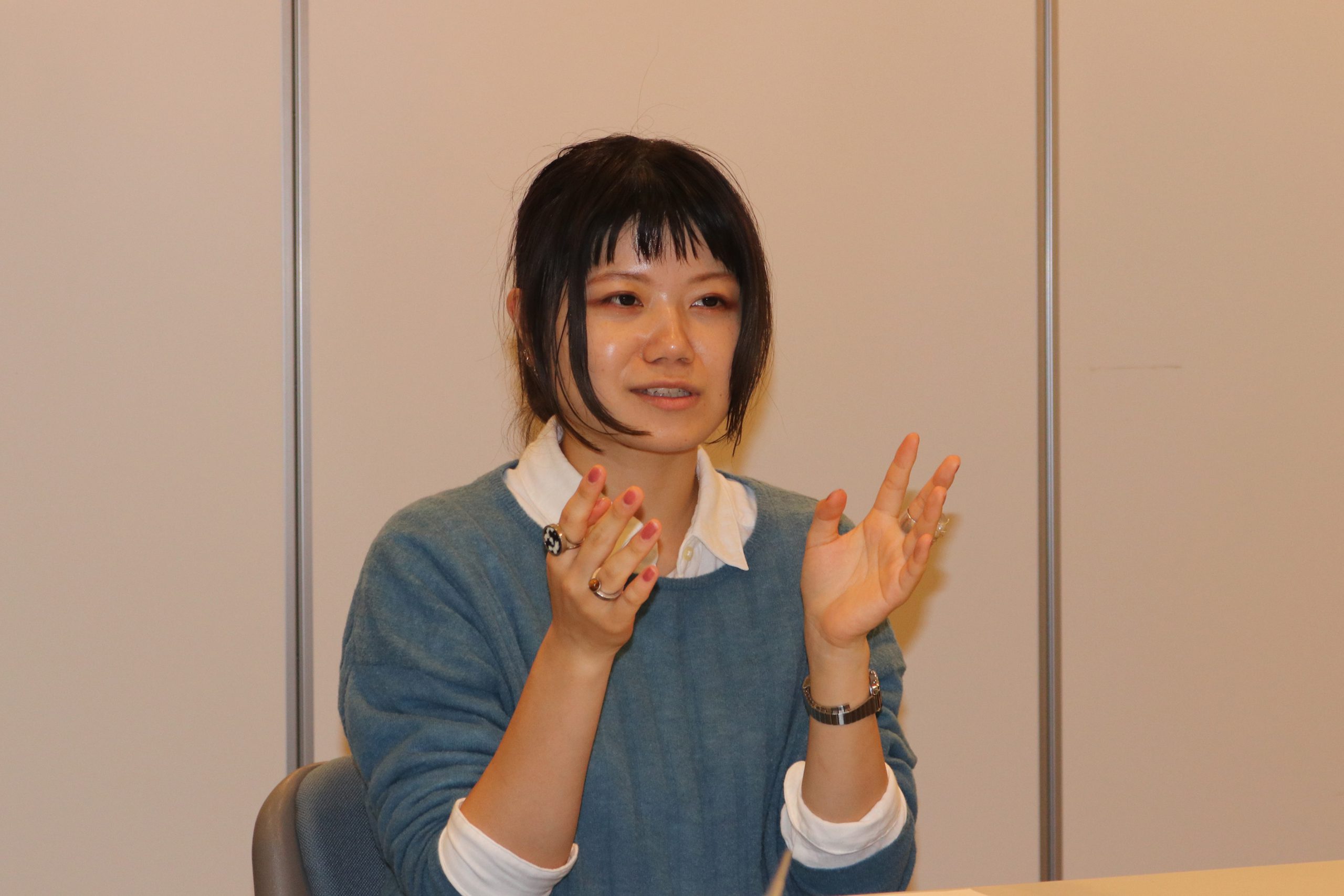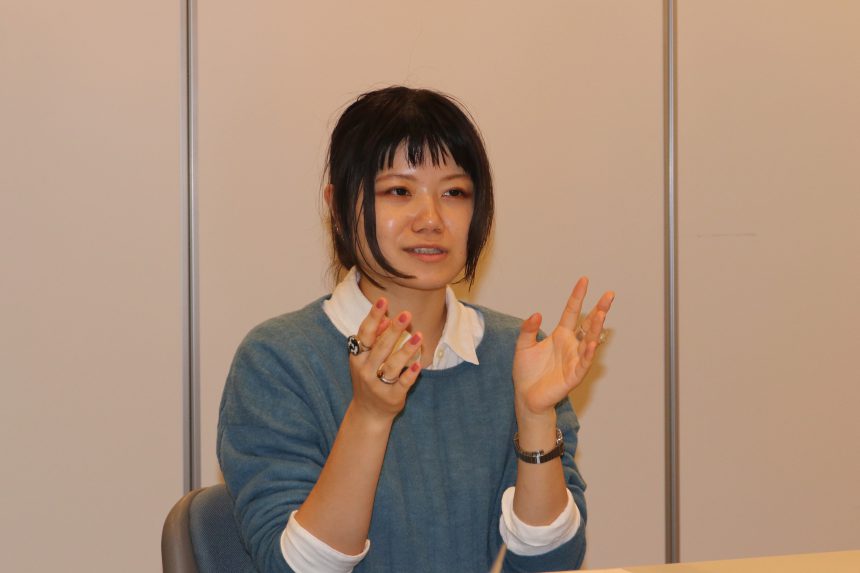
Tokyo University of the Arts
Yui Makino
Yusuke Oiwa
Q. What kind of creative activities do you do?
Makino-san
Since I was an undergraduate, I have been studying graphic design (mainly books and posters) in Professor Matsushita's laboratory, and even after becoming a graduate student, I have continued to create mainly visual designs.
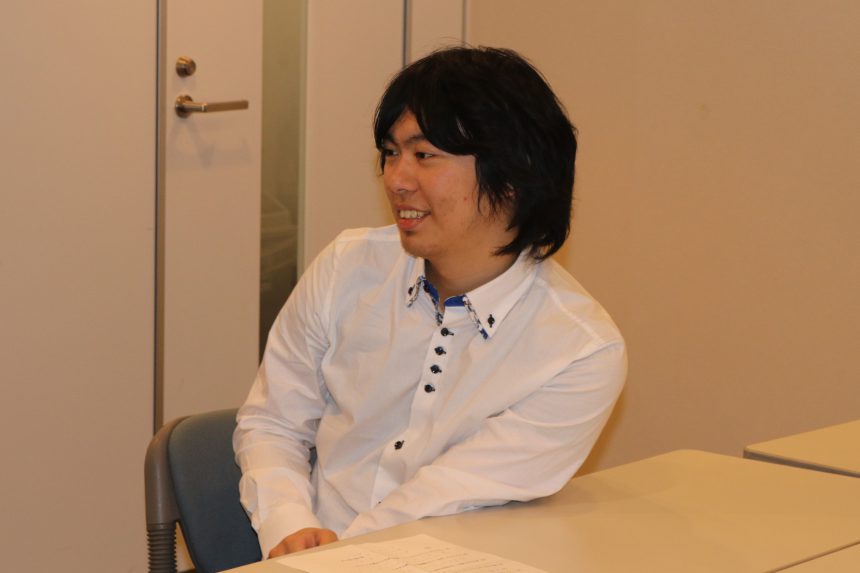
Oiwa-san
I am interested in both design and art, and I often create video works while also making use of design techniques.
Q. The moment when the font's sensitivity was turned on
Makino-san
When I was in high school, I was in the dance club and was in charge of making flyers introducing the team for performances. However, at the time I didn't know there were different types of fonts, and the team name and introduction were all handwritten. However, I began to want to do better, so I decided to express the team's characteristics through typefaces. When I was in high school, I was in charge of public relations for the dance club, and at the time I didn't know that the letters had names.
When I was working in PR, I initially hand-wrote flyers, but I wanted to do better, and I wanted to express the unique characteristics of each dance club through typefaces.
But I didn't know what to do, so I asked a Johnny's fan friend how he made the letters on the fans, and he told me that he printed out a free font, cut it out, and pasted it down.However, when I searched for free fonts, I found that many of them were only in hiragana, which didn't feel right. So I ended up on a website that offered paid fonts. However, they were too expensive for me to buy, so I took screenshots of all the fonts from A to Z, printed them out, and cut and pasted them together to create the page.
That was the first time I experienced changing the typeface to suit the impression I wanted to convey, and I realized how important typefaces are.
Looking back now, I think that was the moment I turned it "ON."
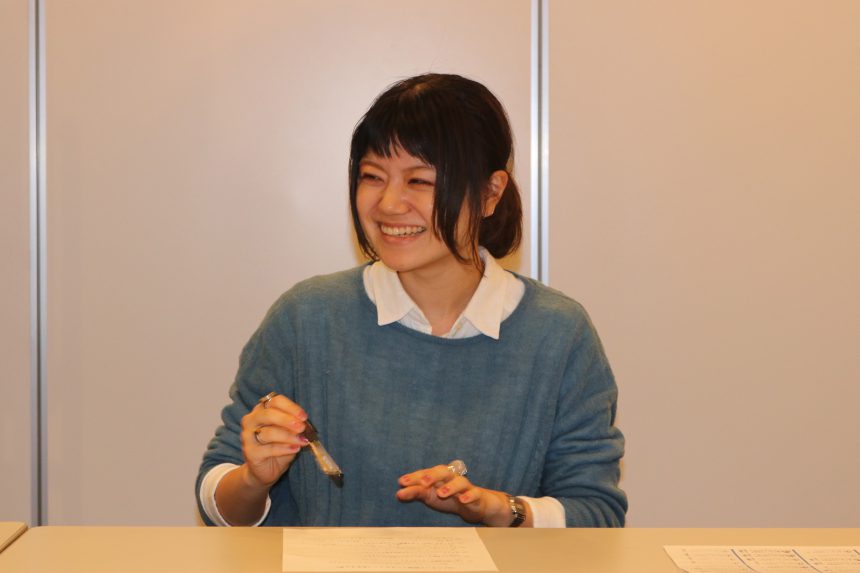
Oiwa-san
When I was in junior high school, the kid sitting next to me had strangely rounded handwriting. I noticed that they also had angular letters and each of their handwriting had its own quirks.
I was just playing around, imitating the handwriting of a lot of different people, and gradually that habit started to rub off on me. I started to be able to write all sorts of characters naturally. I'm good at drawing, so maybe that's why I was good at that sort of thing too.
It's not what you would call a font, but in that sense, I think I had a vague sensibility for typefaces.
Q. What is your favorite Morisawa font and why?
Both of them
This is Ryumin.
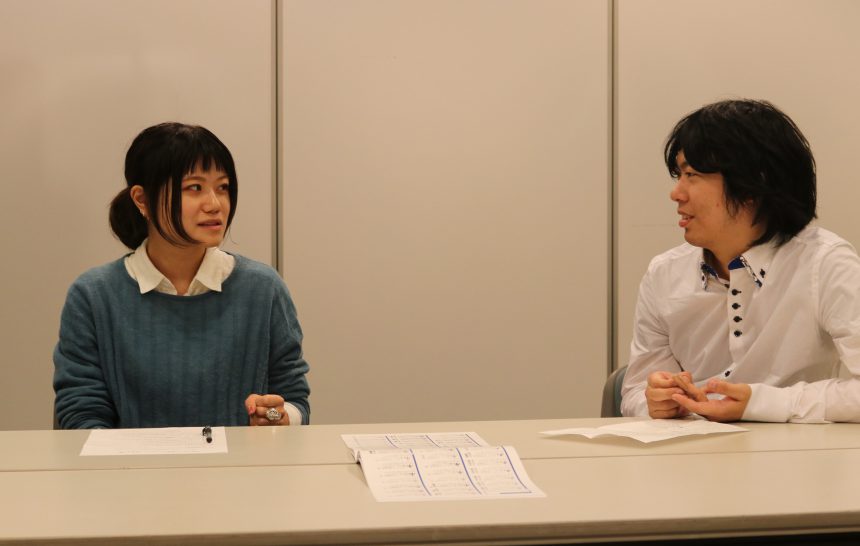
Makino-san
I especially like the kana shape.
When I was an undergraduate, I used to take hiragana characters and separate them into their individual elements as a hobby, creating characters that looked readable but weren't. At the time, I tried out typefaces from various manufacturers, but the one that looked the most beautiful when I put the parts together was "Ryumin," and I've been using it as one of my favorite fonts ever since.
Oiwa-san
I often create slides at university, and I try to choose fonts that make it easy to understand the content.
I think Ryumin gives the impression of being full-bodied and easy to read.
Q. What do you think of the teachers at this school?
Makino-san
Not only Professor Matsushita and Professor Fujisaki, but there are many interactions outside of school (drinking parties) and the distance between teachers and students is close.
After I became a graduate student, I was once scolded very severely, and he told me, "I think of you as professionals, so you should work with pride."
Mr. Matsushita couldn't even remember my name in my first and second years, and at that moment I finally understood why.
The graduate students have been studying design for five years now, and unlike undergraduate students, they now have to practice thinking like designers.
Usually, when you think of a teacher, you think of a stance or distance that says, "I'll teach you what I have," but the professors at the University of the Arts say, "You and I are colleagues in the same field with the same abilities; the difference is whether we have experience or not," so they treat you strictly.
I was very grateful and I think it's a great school.
Oiwa-san
Professor Fujisaki is someone who "doesn't understand" me... and I mean that in a positive way (laughs).
The works created for art school assignments reflect the individual's sensibilities to some extent, so unlike a paper that is wrong, they cannot be dismissed outright.
From the perspective of an "outsider who doesn't understand," Professor Fujisaki patiently listens carefully to the author's intentions and interests.From that perspective, he is able to point out any shortcomings without hesitation, so he is a valuable presence.
Q. The moment the switch turns "OFF"
Makino-san
When one production is finished.
When I was involved in the design for the Tokyo Art Book Fair in the fall, I was so busy that I wondered when I would have time to take a bath, eat, or sleep, but after that, I spent about a week living the typical awful life.
Oiwa-san
I don't think there are many moments when the switch is completely turned off.
It's more like a gear than a switch. When I'm giving a presentation in front of people, it's on gear 10 or 9, but even when I'm resting at home, it's still on at gear 2 or 3.
Sometimes I'm even less focused when I'm creating a piece of art.
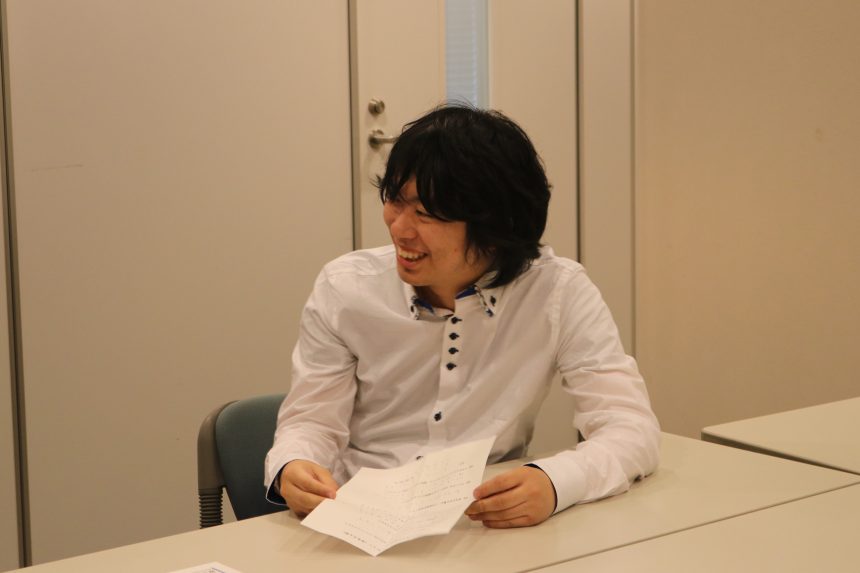
Q. What would you like to challenge yourself with in the future? What are you interested in?
Makino-san
I'm interested in advertising and would like to work in that field.
I believe that knowledge of typefaces is important because advertising is a medium that is viewed by many people who have no knowledge of fonts or typography.
I'm still not at Professor Matsushita's level, but while I'm still a student I want to understand how the impression changes depending on the choice of typeface.
Oiwa-san
I am interested not only in design, but also in fields that are far removed from design.
I hope to create works that bring together knowledge from a variety of sources.

